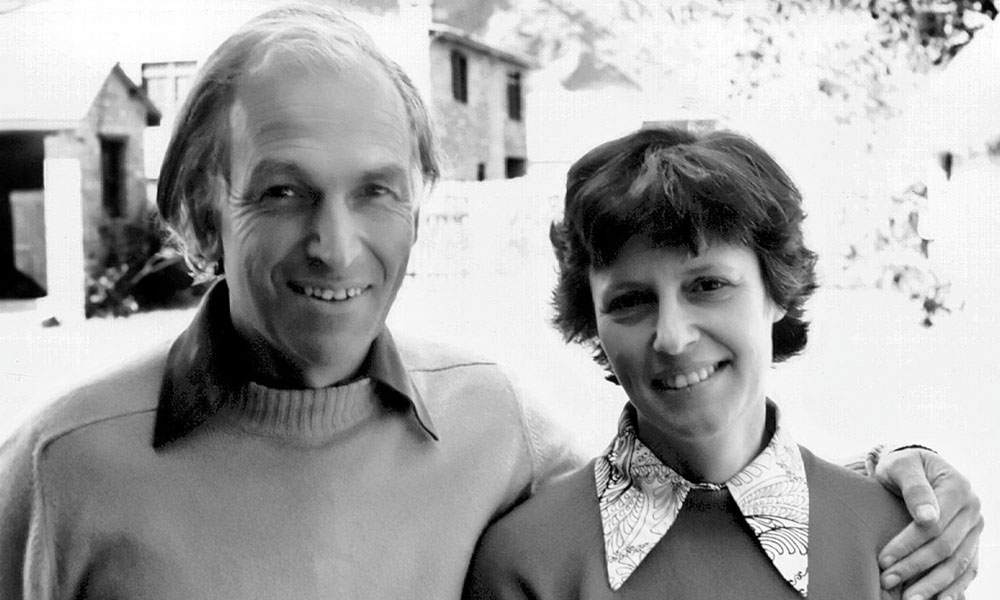Graham Scott-Brown
Graham Scott-Brown has gone to be with his Lord after a very short illness.
Dr Graham Scott-Brown was one of the heroes of INF – taking on the leadership of the organisation when the founder, Dr Lily [Pat] O’Hanlon, retired.
Graham was the son of an eminent London surgeon, and planned to pursue a career in academic medicine. On completing his training, Graham spent a short time in the British Army and was posted to India, where he was placed in charge of five military hospitals. During some time spent in Singapore he felt that God was calling him to serve in Nepal.
In Nepal
Graham arrived in Nepal in February 1960, and became Medical Superintendent at Green Pastures Hospital. Although originally a physician, Graham became a surgeon and obstetrician. His work at Green Pastures and the Shining Hospital was later recognised by the nation of Nepal with the awarding of the King’s Medal.
Shortly before Graham reached Nepal, a young nurse called Margaret Hawkes had arrived. In 1964 the two were married. It was the first wedding in Pokhara of members of what was then known as the ‘Nepal Evangelistic Band’.
In 1966, revival arrived. For three months at Green Pastures Hospital there was a great outpouring of God’s blessing. Prayers were answered in remarkable ways, including many healings. But the following nine months were very difficult as so many things seemed to go wrong. Graham later acknowledged that, “that nine-month period was the most formative time in my life.”
Graham was never going to simply be a hospital administrator. From 1959, Tibetan refugees had been pouring into Nepal after their own country was taken over by the Chinese. There were several refugee camps around Pokhara and Graham, along with other INF doctors, conducted medical clinics for the Tibetans.
Graham was also a trekker. In 1969/70 he, Peter Bisset, and Patrick Paris, trekked into Rolpa where hardly anyone had heard the gospel. Now there are thousands of Christians in that area.
In the early 1970’s, Graham took on the leadership of the mission. He played a key role in instigating the Nepal Government’s Leprosy Control Programme and during meetings with government officials proposed that INF take responsibility for the whole of the western half of the country. Permission was granted in 1973. But even before this, Graham was INF’s “pioneer of western Nepal”. He visited many places which were to become INF’s working areas. There were no roads, no electricity or healthcare. Surkhet was barely a town, three days’ walk from Nepalgunj.
On one occasion, Graham and his Nepali porter attempted the four-day walk from Surkhet to Jumla but were prevented from completing it by blizzards. They decided on an alternative route which would take seven days. They still encountered deep snow, but fortunately the passage of previous porters made the route passable. After three days in Jumla, Graham continued on foot to other important towns, assessing the situation in readiness for INF’s push westwards with the Leprosy Control Programme.
Graham spent the last two years of his time in Nepal based in Kathmandu teaching and training leaders.
Back in the UK
Graham and Margaret returned to the UK in 1983, and Graham worked as a General Practitioner for 17 years. Then he used his excellent language skills to teach Nepali one day a week at the School of Oriental and African Studies in London.
Graham was also extremely active in his local church as a Lay Minister. In the week before he died he had preached in one church and administered communion in another. He never stopped praying for the kind of revival in the UK which he experienced in 1966 in Nepal. He was physically active too until the onset of breathlessness, which led to a hospital admission and his death from fibrosis of the lungs.
Margaret says she has been very comforted and strengthened by the presence of her family and the support of the church and of many friends who held Graham in high regard.
The INF family offer our condolences to Margaret, Sarah, Anna, Martin, and the rest of the family.



